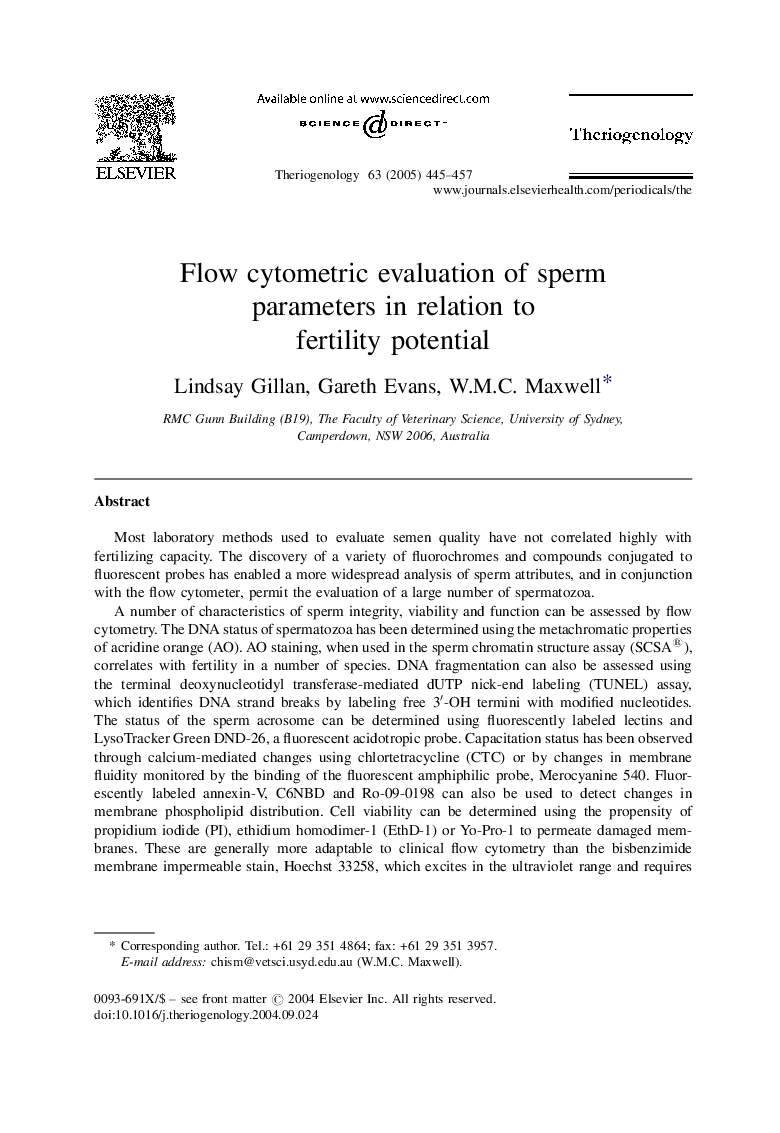| Article ID | Journal | Published Year | Pages | File Type |
|---|---|---|---|---|
| 10893347 | Theriogenology | 2005 | 13 Pages |
Abstract
A number of characteristics of sperm integrity, viability and function can be assessed by flow cytometry. The DNA status of spermatozoa has been determined using the metachromatic properties of acridine orange (AO). AO staining, when used in the sperm chromatin structure assay (SCSA®), correlates with fertility in a number of species. DNA fragmentation can also be assessed using the terminal deoxynucleotidyl transferase-mediated dUTP nick-end labeling (TUNEL) assay, which identifies DNA strand breaks by labeling free 3â²-OH termini with modified nucleotides. The status of the sperm acrosome can be determined using fluorescently labeled lectins and LysoTracker Green DND-26, a fluorescent acidotropic probe. Capacitation status has been observed through calcium-mediated changes using chlortetracycline (CTC) or by changes in membrane fluidity monitored by the binding of the fluorescent amphiphilic probe, Merocyanine 540. Fluorescently labeled annexin-V, C6NBD and Ro-09-0198 can also be used to detect changes in membrane phospholipid distribution. Cell viability can be determined using the propensity of propidium iodide (PI), ethidium homodimer-1 (EthD-1) or Yo-Pro-1 to permeate damaged membranes. These are generally more adaptable to clinical flow cytometry than the bisbenzimide membrane impermeable stain, Hoechst 33258, which excites in the ultraviolet range and requires UV laser equipment. Mitochondrial function can be determined using rhodamine 123 (R123) and MitoTracker Green FM (MITO) and 5,5â²,6,6â²-tetrachloro-1,1â²,3,3â²-tetraethylbenzimidazolyl-carbocyanine iodide (JC-1). Flow cytometry is a tool that may be used in the future to monitor many new potential markers of sperm function.
Related Topics
Life Sciences
Agricultural and Biological Sciences
Animal Science and Zoology
Authors
Lindsay Gillan, Gareth Evans, W.M.C. Maxwell,
